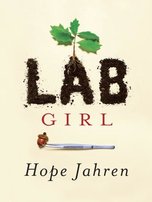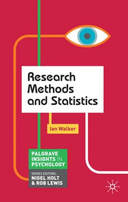Author: Hope Jahren
ISBN: 978-1-101-87372-4
APA Style Citation
Jahren, H. (2016). Lab Girl. New York: Random House.
Buy this Book
https://www.amazon.com/Lab-Girl-Hope-Jahren/dp/1101874937
| activity_lab_girl3.pdf |
Think researching moss, trees, and leaves is boring and mundane? Think again. Reading Hope Jahren’s engaging and humorous recap of her career thus far as a paleobiological researcher demonstrates just how interesting science can be when you really love what you study and have others who share your passion. Jahren describes her initial interest in scientific research as a child who often accompanied her father (a community college science instructor in Minnesota) to his lab. At the lab, there were few rules, and she could explore the wonders found in the drawers and cupboards of the lab. As she moved onto college at Berkeley, she grew distant from her family but found a research soul mate in her lab assistant Bill with whom she still works and on whom many of the stories in Lab Girl are based. Lab Girl ingeniously connects chapters about plant life and human life, alternating between and connecting the importance of shared commonalities such as the importance of roots, reproduction and the interdependence of other organisms for the sustenance of life.
Jahren’s first experience with lab work was in a hospital where she put together prescriptions for patients as a part-time job during college. This experience taught her the importance of precision and a sterile workspace to eliminate any contamination to the medicine the patients received. Since this time, her work has led her to research at four different universities (she currently works at the University of Oslo) and to many areas around the world. She describes her trips to Norway, the Nunavut territory of Artic in Canada, Colorado, and Ireland in the book. She travels to explore the different plant life in these areas and the unique flora and fauna of vastly different environments. In some cases, she is traveling to explore a particular problem or question about a specific plant or tree, while other times she is simply exploring plant life that does not exist elsewhere and the question will arise from what she finds.
Jahren met her lab assistant Bill as a graduate student at Berkeley. She took a group of undergraduates on a field trip to dig holes in order to examine the different types of soil in the layers of the hole. Bill was a student on the trip who identified the soil quite easily because as he describes, “I used to live in a hole”. We find out later that this was really an underground bunker in his parent’s backyard when he was a teenager. Jahren describes the invaluable contributions that Bill has made to their findings over the years, from helping graduate students manage their bills to watching plants grow hour to hour; he makes the lab runs day-to-day. This allows Jahren to spend her time teaching, writing grants, writing academic papers, preparing presentations and later spending a bit of time with her family.
Jahren makes it clear that even if one loves their field of research, the life of a scientific researcher is not glamorous nor does one become rich and famous for their work. Jahren has to apply for grant money to run her lab and even while this money may seem like a substantial sum, it goes to buying lab equipment, paying a portion to the University, paying Bill (her lab assistant, not the paper) and then having roughly 10-15% of the initial grant money left to conduct the actual research. Once the money runs out, the cycle begins again, and even with some support from the University, Jahren has had to resort to making her own lab equipment, driving across the country in a U-Haul to collect the equipment from a retired professor’s lab and stealing equipment from other departments labs.
Frozen McDonalds hamburgers and lots of coffee were cheap ways to eat while trying to sustain themselves through all night lab sessions. Bill lived for a while in his van, and later in the lab itself because his meager salary was not enough to pay for a respectable apartment near campus. Even under these restrictive conditions, Jahren and Bill have a great time and find deep enjoyment in each discovery in the lab.
However, Jahren is also careful to point out that the funding for science research in the United States continues to decline and there is not enough money for researchers to conduct follow up studies to verify their research or to investigate new questions that they want to explore. Most of the money for the type of science research Jahren conducts currently comes from the National Science Foundation. Jahren also describes the in-group bias that exists within a field of research and how difficult the field of paleobiology is to break into. She drives across the country to speak at conferences and to get her name out there as a credible source in the field, and existing misconceptions and receives much push back to those who do not want to look at new evidence. She also faces discrimination as a female in a field dominated by men, some of whom believe that as a woman she has nothing significant to contribute to the discipline of paleobiology. To overcome these obstacles and make sure that she publishes work that warrants further funding, Jahren and Bill spend many nights in the lab and even after Jahren has a son, she will have dinner with her family, put her son to bed and head back to the lab until the following morning.
Despite Jahren’s successful research career, she describes many failed experiments including those where someone forgot to water plants at regular intervals after which all of the plants had to be discarded, exploding glass beakers which had been overfilled with CO2, and a strange encounter with airport security in Ireland because it is illegal to bring plant material out of the country without special permission.
You may be surprised at what you learn about plants such as the roots of a tree are generally far larger in terms of surface area than what we see above ground, bark protects trees during the winter but is often shed in the warmer months and a new bark in built for the following winter. Trees that live in cold climates anticipate and store reserves not based on weather (which can be unpredictable) but on the cycles of the sun, which will be the same each year. Jahren describes how leaves grow and how two trees with the same DNA can be found growing miles away from one another. She describes why certain trees are found in different climates and how they sustain life slightly differently as a result of their environment.
Despite the hardships that are clearly a part of the life of a scientific researcher, Jahren captures the joy of a discovery that no one else knows and the fun in the exploration of a discipline one loves.
Other Related Resources
Introduction to Lab Girl Video
https://www.youtube.com/watch?v=Yht9LrYRxqg
The Jahren Laboratory website
https://www.soest.hawaii.edu/GG/FACULTY/jahren/
The Secret Life of Plants: PBS News Hour Interview with Hope Jahren
https://www.youtube.com/watch?v=Yht9LrYRxqg
How Two Determined Scientists Built a World-Class Lab out of Radio Shack Parts
https://arstechnica.com/science/2016/05/how-two-determined-scientists-built-a-world-class-lab-out-of-radio-shack-parts/
The Chronicle of Higher Education
If America Wants to Kill Science, it’s on its Way
http://www.chronicle.com/article/If-America-Wants-to-Kill/236011
Time Health
Hope Jahren on Plants, Mud Manicures and Science’s Woman Problem
http://www.chronicle.com/article/If-America-Wants-to-Kill/236011
Washington Post
A Scientist’s Uncommon Bond with her Odd lab-partner-for-life
https://www.washingtonpost.com/opinions/a-scientists-uncommon-bond-with-her-odd-lab-partner-for-life/2016/04/15/12850ff2-f29b-11e5-a61f-e9c95c06edca_story.html?utm_term=.53b9a186296d
Psychological Figures and Concepts
DNA
Embryo
Electroconvulsive therapy
In-Group Bias
Mania
National Science Foundation
Postpartum depression
Scientific methodology
Statistical significance


 RSS Feed
RSS Feed